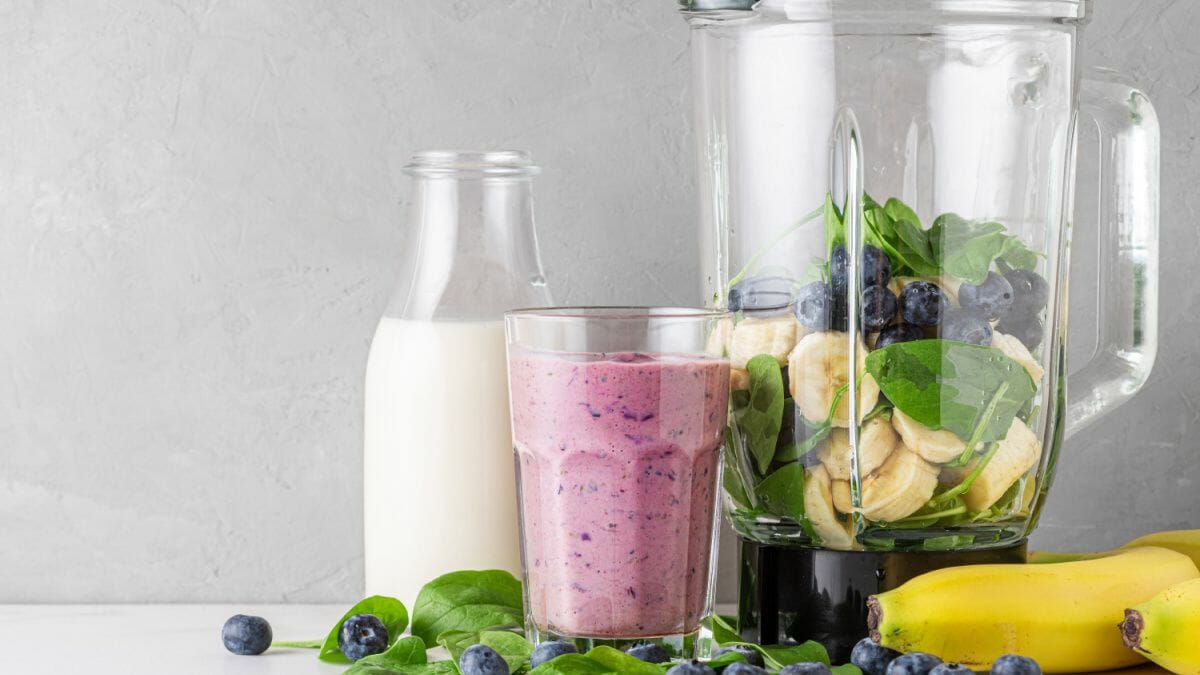
Food labels provide key nutrient information and can be a great tool to compare the quality of food items. By understanding how to effectively compare food items—from the number of calories to the amount of added sugar—we can make healthier choices and stay on track with our daily targets. According to the US Food and Drug Administration, food labels can be broken down into four components: 1) serving information, 2) calories, 3) nutrients, and 4) daily value (%).
Serving Size Information
The serving size is the typical amount of a specific food item that one would normally consume. It’s important to note that it is not a specific recommendation for the amount that one “should” eat but instead what he or she would “typically” eat. Additionally, all items on a food label are a reflection of the serving size and may need to be doubled or tripled depending on how much of that item is consumed. Food manufacturers can underestimate these typical portions, resulting in the serving size being lower than what you would regularly eat. For example, if the serving size for a dressing or marinade was 2 tablespoons but you used 4 tablespoons, you would then need to double all calories, sugars, and nutrients on the label.

Calories
The ‘calories’ on a nutrition label provide a measure of how much energy there is in one serving of the food item. These labels are generalized to a 2,000 calorie per day diet. However, daily caloric needs will largely vary depending on an individual’s total daily energy expenditure, which also takes into account age, gender, and activity level. Aside from calories, the label may also indicate ‘calories from fat,’ which highlights the total amount of energy we obtain solely from fat.
Nutrients
Now that we’ve looked at both the serving size and total calories, it’s all about breaking down the macronutrients and micronutrients. Understanding this section of a nutrition label will make you an expert at comparing. Why is it important to be able to analyze nutrients? Food manufacturers will often use deceptive marketing tactics to make their processed products with no nutritional value appear healthier. Granola bars, protein bars, and fruit juices for example may use terms such as “all-natural, “gluten-free”, or “antioxidant” to create a false sense of health. However, it’s not uncommon for ultra-processed foods to contain large amounts of added sugar or partially hydrogenated oils (trans fats) [3].
The key nutrients outlined on a nutrition label include:
- Total fat, saturated fat, trans fat
- Protein
- Carbohydrates, dietary fiber, sugar
- Cholesterol
- Sodium
- Vitamins and minerals; vitamin A, C, calcium, iron

What to include and what to avoid?
As highlighted by the FDA, the nutrients we should obtain more of include dietary fiber, vitamin D, calcium, iron, and potassium. Dietary fiber is not only essential for healthy digestion but it provides subsistence to our meals which keeps us feeling fuller for longer throughout the day. Additionally, high-fiber foods tend to have a lower glycemic index, which limits spikes in insulin that would normally occur with refined carbohydrates like white flour and white sugar. The FDA also recommends that we limit added sugars and excess sodium while avoiding trans fats and moderating our intake of saturated fat [5]. Industrial trans fats such as partially hydrogenated oils—including soybean oil and canola oil—have been linked to higher levels of inflammation within the body [1].
Total Sugar vs. Added Sugar
When considering sugar on a food label, it’s important to check both ‘total sugar’ and ‘added sugar.’ Total sugars are those naturally present in foods such as fruit (fructose), while added sugars are those that have been removed from their original source and added to foods or beverages during processing. Excess consumption of added sugar can make it difficult to meet daily nutrient needs while staying within our recommended daily caloric intake. There are about 61 different names for sugar listed on a food label including sucrose, dextrose, high-fructose corn syrup, fruit juice concentrate, maltodextrin, and dehydrated cane juice. Based on the Dietary Guidelines for Americans, it is recommended that we limit our added sugar consumption to 10% of total calories [6].
% Daily Value
Lastly, the percentage Daily Value (%DV) on a nutrition label provides the percentage of the daily value for each nutrient in a serving of food. This is a critical part of a food label, as it indicates whether a food is high or low in a specific nutrient. The FDA indicates that less than 5%DV of a specific nutrient is considered ‘low’ while 20%DV or higher is considered ‘high’ []. The %DV is key for comparing similar food items so as long as the serving sizes are the same. Be sure to choose food items with a high %DV for dietary fiber while choosing low %DV for saturated fat, sodium, and added sugars.
Aside from knowing what our daily caloric intake is, accurately reading food labels will allow us to stay on track with our health by being able to effectively differentiate food items. Just because an item’s packaging makes it appear healthy at the grocery store does not mean the nutritional value reflects this on the food label. You can be proactive with your health by understanding how to compare nutrient-dense items from those with little to no nutritional value.
This article is based on the nutrition guidelines outlined by the FDA and refers to an estimated 2,000 calorie per day diet. For more information related to nutrition labels please visit the US Food and Drug Administration at https://www.fda.gov/






